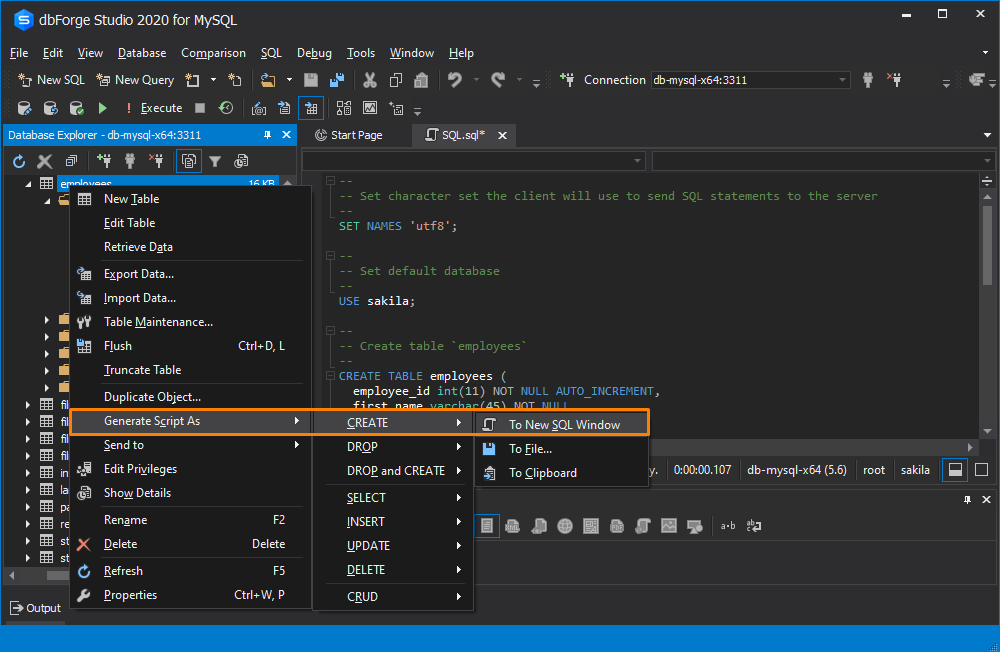
- #Azure data studio connect to oracle install
- #Azure data studio connect to oracle code
- #Azure data studio connect to oracle password
- #Azure data studio connect to oracle mac
The module only needs to be installed once on the machine you want to run your script from. At the time of this writing, the module is on version 2.5
#Azure data studio connect to oracle install
Download and install the module by running the command Install-Module Az. You can find this module on the PowerShell Gallery. To connect to an Azure SQL database with PowerShell, you’ll need to install the Az PowerShell module.
#Azure data studio connect to oracle code
Now run the query you used earlier and watch the magic happen.Ĭonnecting to mySql in Visual Studio Code Connecting to an Azure SQL Database with PowerShell Now that you have authenticated to the database and the firewall is set up, you can start running your queries by going to –> Databases, right-clicking on your database, and selecting New Query. If you haven’t setup the firewall rule already, you will be prompted by SSMS to authenticate with your Azure account. Open SQL Server Management Studio to connect to the database name using SQL Server authentication and the SA user you set up earlier. Go back to your SQL Database resource page and copy the Server Name. If you don’t have it installed, you can download the latest version from Microsoft or install it using a package manager. SSMS is also fully compatible with Azure SQL databases. Time-tested and battle-hardened, this has been the tool of choice for SQL server database administrators for over a decade. Connecting to an Azure SQL Database with SQL Server Management Studio (SSMS)īy far the most robust tool for managing a SQL Database server is SSMS. Now that you know the firewall rules have been setup, we can start trying this from other platforms. If you’re using the sample database, you can use the sample query below. As of the time of this writing, there isn’t any right-click functionality in this UI, so your only option to interact with the database is through the Query Editor. Once you have logged in, you’ll see a panel with the Tables, Views, and Stored Procedures on the left of Query Editor. Use the SA account, you set up earlier to login ( AtaAdmin: Admin123). Once you’re there, you’ll be prompted to login with a Microsoft account or SQL Credentials. Go back to the Overview page using the navigation menu on the left and look for Query Editor. Since you’re already on the Azure Portal, you can stay right here for the first demo. Once that’s done, you’re ready to move on to the first demo! Connecting to an Azure SQL Database with The Azure Portal

But in practice, this will be the subnet range or virtual network of your application tier. This page also shows your device’s IP address, which is what I’ll be using for the demo.

Once here, you’ll have the option to choose an IP range. Setting an Azure SQL Server firewall rule Go to the resource page of the SQL Database you want to connect to and look for an option called Set Server Firewall. You can connect this to an existing Azure virtual network, or define an IP range that can access the database, which is what is done in the demos below.

Next, you’ll need to login to the Azure Portal to make sure that your device can to connect to the database. For the love of Equifax, please use best practices for passwords when you set something like this up in QA or Production!
#Azure data studio connect to oracle password
The password I’m using isn’t the most secure, but it’ll do for demo purposes. This database has a SQL admin (sa) user AtaAdmin and the password is Admin123. Using the instructions from the quickstart document, I’ve set up a sample database called ata-demo. There are dozens of different ways to connect to Azure SQL, and unfortunately I can’t go over them all, but the ones I will be covering in this post are:īefore you get started, you must make sure you have a database available and can connect to it.
#Azure data studio connect to oracle mac
A Windows 10, Mac OS, or Linux laptop or desktop with PowerShell, Visual Studio Code and SQL Server Management Studio installed.An Azure SQL Database (You can use your own if you like, but I’ll be using the sample.If you’d like to connect to Azure SQL database, you’ll need to meet a few prerequisites ahead of time. Connecting to an Azure SQL Database with PowerShell.Connecting to an Azure SQL Database with Visual Studio Code (Code).Connecting to an Azure SQL Database with SQL Server Management Studio (SSMS).Connecting to an Azure SQL Database with The Azure Portal.


 0 kommentar(er)
0 kommentar(er)
